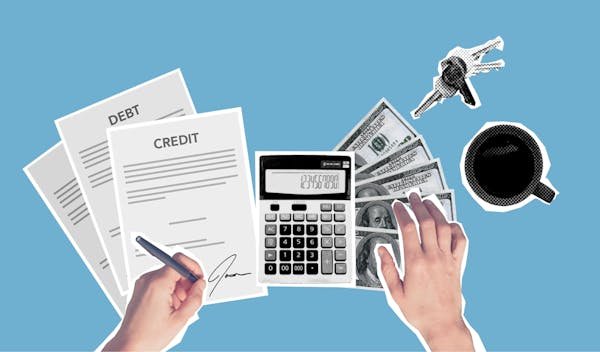When building a business that aims to scale, the big question often boils down to this: should you go the licensing route or stick with traditional ownership? One promises predictable income and low upfront costs. The other offers complete control and one-time sales. Which one’s better? More importantly, which one scales faster?
1. SaaS companies using licensing models grow 3.5x faster on average than product-based companies
Why licensing leads to faster growth
SaaS businesses have redefined what growth looks like. A big reason why they grow faster is that they use licensing instead of ownership. With licensing, users pay monthly or annually. That creates a stream of income that builds over time.
Product-based businesses, on the other hand, sell once and start over every month.
When a business grows 3.5 times faster, it’s not just about money. It’s about hiring, expansion, brand building, and gaining trust. Licensing lets businesses do all that without the heavy burden of upfront capital or inventory.
What makes the difference?
With product sales, every new customer costs time and money. Once you ship the product, the sale is done. You need to find a new customer to make more money. But with licensing, one customer might stay for 6 months, a year, or even longer.
That means more income from the same person, with less effort.
There’s also the question of scaling operations. Licensing models don’t need to ship anything physical. Everything is digital, fast, and often automatic. That alone cuts down growth friction by a lot.
Actionable takeaway
If you’re building a software or service, think long and hard before going with a one-time purchase model. Even if you sell at a higher price, licensing helps you build momentum. You’ll get more breathing room and a better shot at long-term success.
Try testing a simple monthly or yearly plan. Offer it alongside your main product. See how customers respond. You might find that the monthly option becomes more popular than you expected.
2. Recurring revenue models (licensing) increase company valuation by 2x to 3x compared to one-time ownership models
Investors love predictability
The moment you switch to a licensing model, your company becomes more predictable. That’s something investors absolutely love. When revenue is recurring, they can see where your business will be in 6 months or a year. That’s what drives up valuation—by 2 to 3 times in most cases.
If you’re ever looking to raise funds, sell your business, or even merge with another company, having a licensing model gives you a major edge.
Why ownership struggles to impress buyers
Ownership models are harder to value because they depend on constant new sales. Each month starts at zero. That makes forecasting hard. It also means your business is more sensitive to market changes.
With licensing, on the other hand, you already have customers paying each month. Even if growth slows, money still comes in. That steadiness is what makes the business more valuable.
Actionable takeaway
If you’re planning an exit or trying to raise capital, look at your revenue model. Even if you’ve been selling products the traditional way, think about how to wrap them into a subscription offer.
For example, a company selling design templates can offer a monthly membership. A tool seller can offer maintenance plans or training as a subscription. The goal is to create a stream of income that doesn’t depend on new buyers every day.
3. 80% of tech startups favor licensing over ownership for scalability
Startups are choosing leaner paths
Why are 80% of tech startups going for licensing? Because it makes growth smoother. When you’re starting out, every dollar matters. Licensing models need less upfront investment. You don’t have to build stock, manage warehouses, or worry about shipping. Instead, you build once and sell endlessly.
This lean model allows startups to focus on what matters—acquiring users, improving the product, and scaling fast.
Ownership is slower, heavier
When you own everything, you’re also responsible for everything. Production, delivery, repairs, returns—it’s a lot. That weight slows down early growth. And when startups face that kind of friction early on, it can break them.
With licensing, you can focus on building a product that solves a real problem and then scale distribution digitally.
Actionable takeaway
If you’re building a tech startup, challenge yourself to stay digital. Sell access, not physical goods. If you must sell products, think about how to build services around them that can be licensed.
For example, if you’re selling an app, offer advanced tools or analytics as a monthly add-on. If you’re building a device, bundle it with a software dashboard that requires a license. This hybrid approach keeps your model flexible and scalable.
4. Licensing models achieve break-even 50% faster than ownership models in digital businesses
The speed of reaching break-even matters
Break-even is that moment when your business starts making more money than it spends. The faster you reach it, the safer and more stable your business becomes. In digital businesses, licensing models help you reach this point 50% faster than ownership-based ones.
Why? Because licensing creates predictable income. It keeps the cash flowing steadily. This cushions your expenses and makes your finances easier to plan. When you’re working with a limited budget (which most digital businesses are), that kind of predictability is gold.
What slows down ownership models?
Ownership-based businesses typically rely on large, one-time sales. This means income comes in big chunks, but not regularly. There’s also higher upfront investment—whether it’s inventory, storage, or product manufacturing. Those upfront costs push the break-even point further away.
In contrast, licensing models usually come with lower setup costs and faster returns. You create a product once—say a piece of software or digital tool—and sell access to it over and over again without additional production costs.
Actionable takeaway
Want to break even faster? Focus on building a licensing system. If you’re launching a new product, start with a lower-cost monthly plan. Even if it brings in less per customer initially, it adds up and smooths out cash flow.
Also, automate renewals. Use billing platforms that handle subscription cycles so you can focus on marketing and support. The faster your income becomes predictable, the sooner your business stabilizes.
5. Churn rate in licensing models averages 5–10% annually, impacting long-term scaling
Why churn is your silent killer
Churn rate is the number of customers who cancel their subscriptions. In licensing models, the average churn rate is around 5 to 10% per year. While that might sound low, it can quietly chip away at your growth if you ignore it.
Think about it like a leaky bucket. Even if you’re adding new customers every month, losing old ones can cancel out your gains. Over time, that slows down your ability to scale.
Ownership models don’t have churn—but they have other limits
Ownership models technically don’t have churn. Once someone buys your product, that’s it. But they also don’t give you many chances to win that customer back unless you launch a new product.
Licensing models, on the other hand, let you build long-term relationships. If someone sticks with your product for 12 months, that’s 12 chances to improve their experience, upsell, or deepen the value you offer.
Actionable takeaway
If you’re using a licensing model, track your churn every month. Don’t just celebrate new signups—watch who leaves. Then go deeper. Why did they cancel? Did they find a better product? Were they confused about your pricing?
Use surveys, interviews, and even cancellation funnels to capture feedback. Offer support at the moment of cancellation. Sometimes a simple conversation or small discount can save the relationship.
Investing in onboarding is also key. The faster your customers see value, the less likely they are to leave. Build tutorials, support channels, and quick-start guides. Educate them. Guide them. Retain them.
6. 70% of enterprise software vendors now offer subscription (licensing) over perpetual licensing (ownership)
The shift is already happening
Enterprise software used to be dominated by ownership models. You’d buy a product once, install it, and maybe upgrade years later. But now, 70% of enterprise software vendors have moved to subscriptions. That’s a huge shift—and it tells us something important.
Big companies are choosing flexibility. They want to pay for access, not ownership. It makes budgeting easier. It simplifies updates. And most importantly, it supports faster scaling inside massive organizations.
Why perpetual licenses are fading
With perpetual licenses, every major update requires a new sale. That means delays, negotiations, and IT headaches. Subscriptions solve all that. They deliver constant value through regular updates, cloud access, and seamless user management.
Vendors benefit too. Subscriptions create recurring revenue and reduce dependency on big one-off deals. Instead of chasing giant contracts, software companies can build a stable base of subscribers and grow from there.
Actionable takeaway
If you’re selling software to businesses, rethink how you price and deliver it. Even if you started with a one-time payment model, now is the time to evolve.
Try offering a flexible subscription plan. Add tiers based on usage, team size, or features. The goal is to remove barriers and make it easy for companies to start using your product without a big commitment.
Also, make switching feel natural. Many businesses still use old systems. Position your subscription model as an upgrade, not a replacement. Offer migration help, free onboarding, or even hybrid plans to ease them into it.
7. Customer lifetime value (CLTV) in licensing models is 2.3x higher on average than ownership-based models
Why customer value matters more than one-time sales
Customer lifetime value (CLTV) is one of the most important metrics in any business. It tells you how much money you’ll make from one customer over the full time they stay with you. In licensing models, CLTV is 2.3 times higher than in ownership models. That’s a huge edge when it comes to scaling.
When you sell something once, that’s it. The money stops there unless you upsell or launch a new product. But when someone pays monthly or yearly, they’re essentially creating a long-term stream of income for your business.
How this changes your strategy
If your CLTV is higher, you can afford to spend more to acquire customers. That means you can out-market your competitors. You can invest more in support, onboarding, or even free trials because you know the return is coming over time.
Licensing also builds habits. When people use your product regularly and pay for it monthly, they become attached to it. That emotional and functional connection increases loyalty and retention—two of the most powerful forces in any business.
Actionable takeaway
If you’re still measuring your success based on sales volume, shift your focus to lifetime value. Look at how long customers stick around, what plans they choose, and what triggers them to leave or upgrade.
Offer annual discounts to boost retention and increase CLTV even more. Build features that reward long-term usage. The goal is to turn your product into something people use regularly, not just once.
And if you’re struggling with pricing, don’t guess. Run small tests with different tiers. See what people value most. Then charge in a way that encourages longer stays, not just quick wins.
8. Businesses using ownership models face 30–50% higher upfront customer acquisition costs (CAC)
Ownership makes customer acquisition more expensive
When your business depends on selling something once, you need a steady stream of new customers. That means marketing harder and more often. And that means spending more money upfront. In fact, ownership-based businesses face 30% to 50% higher customer acquisition costs (CAC) than their licensing-based counterparts.
Why? Because every month starts from zero. You don’t have guaranteed income from past customers. That creates pressure to keep spending, keep promoting, and keep pushing.
Licensing spreads the cost over time
With licensing, even if you spend more upfront to get a customer, you earn that money back over time. That makes CAC more manageable. Your marketing budget stretches further. And your growth becomes more sustainable.
This also changes how you market. Instead of focusing on big sales events or discounts, you can focus on building trust, educating users, and creating long-term relationships.
Actionable takeaway
Look closely at your CAC. Track how much you spend per channel and what kind of customers you’re attracting. If your CAC is rising, it may be time to rethink your model.
Even if you sell physical products, consider adding a licensing element—like a members-only community, a digital service layer, or educational content that requires a subscription.
Also, use retargeting wisely. If you know your customers stick around, you can afford to spend more retargeting them. But if your model depends on single purchases, you’ll need to keep costs low or risk shrinking your margins.
9. 72% of digital content creators prefer licensing models due to lower marginal distribution costs
Why creators are switching to licensing
In the world of digital content, creators are choosing licensing for a very practical reason—72% prefer it because the cost of distributing each new copy is basically zero. Once a course, template, or ebook is created, it can be shared endlessly without extra cost.
With ownership, especially of physical items, there’s a cost every time something is sold—whether it’s manufacturing, shipping, or storage. That makes scaling harder. Licensing doesn’t have that problem.
Low marginal costs = high margins
When you don’t have to spend money to deliver your product, every new sale is almost pure profit. That’s the beauty of licensing in the digital space. It keeps your overhead low and your margins high.
This also means you can scale faster. You can sell your product to 10 people or 10,000 people and your costs stay the same. That’s the kind of growth engine most businesses dream of.
Actionable takeaway
If you’re a digital creator, stop selling things once. Start thinking about how to sell access. Bundle your content. Offer memberships. Build a subscription library. Create licensing deals for teams or schools.
You can even partner with other creators to license content as a package. That lets you reach new audiences without creating new products from scratch.
And finally, invest in automation. Use platforms that handle delivery, renewals, and access control. The more hands-off your model is, the more time you can spend creating and promoting.
10. Licensing models allow for 90% faster product iteration and feature deployment cycles
Speed matters in a competitive market
In today’s fast-moving digital space, the ability to release new features quickly is a huge advantage. Licensing models, especially in SaaS and digital tools, allow for 90% faster product iteration compared to ownership-based models.
Why? Because licensed products are often cloud-based. That means developers can push updates instantly without needing customers to install anything. New features, bug fixes, and enhancements can go live with a click.
Ownership models create friction
When you sell a product that’s owned—especially one installed locally or distributed physically—updates become harder. Customers might delay upgrading. They might not even know there’s a new version. And in many cases, you can’t force adoption.
That delay kills momentum. It keeps your product from evolving fast enough to meet user needs. It also reduces customer satisfaction, since they don’t get the latest improvements unless they manually update or repurchase.
Actionable takeaway
If you’re developing a product, prioritize delivery methods that support continuous updates. Even if your product isn’t software, you can build an online dashboard, portal, or tool that offers licensed content or features that evolve over time.
Communicate updates clearly. Add changelogs, tooltips, and welcome modals that show users what’s new. Make improvements visible so they feel the product is always getting better.
This boosts retention, engagement, and perceived value—all key to long-term growth.
11. Owned physical assets depreciate 10–15% annually, reducing scalability in ownership models
The hidden cost of physical assets
If your business depends on owning things—like equipment, real estate, or vehicles—depreciation is a cost you can’t ignore. On average, physical assets lose 10–15% of their value every year. That eats into your bottom line and slows down your ability to scale.
The more you own, the more capital gets tied up in things that lose value. That might be fine for stable industries, but it’s a big disadvantage if you’re trying to scale quickly.
Licensing doesn’t carry that baggage
Licensing models don’t tie up cash in depreciating assets. Instead, they turn intellectual property or digital goods into ongoing income. That frees up cash for marketing, development, hiring, or expansion.
It also makes your business lighter and more flexible. You can test new markets, launch new offerings, or pivot without worrying about sunk costs tied up in equipment or inventory.
Actionable takeaway
Audit your assets. How much are you spending to own things that don’t directly contribute to growth? If the number is high, it may be time to rethink your model.
Could you license out your assets instead? Could you move parts of your business online? Could you switch from selling equipment to offering usage-based access?
The more you reduce your dependence on depreciating assets, the faster you can adapt and grow.
12. Licensing-based companies are 60% more likely to expand internationally within the first 3 years
Licensing unlocks global reach
Going global sounds exciting, but it’s tough with a traditional ownership model. You have to deal with logistics, legal issues, shipping, and taxes in every new region. That’s why most physical product businesses expand slowly.
Licensing-based companies don’t have that problem. In fact, they’re 60% more likely to go international within their first three years.
Why? Because digital licensing knows no borders. As long as there’s internet, there’s potential for business.
Barriers are lower than ever
With tools like Stripe, PayPal, and local currency pricing, it’s now easier than ever to sell subscriptions globally. You don’t need a local warehouse. You don’t need to worry about tariffs. You just need a product people want and a way to deliver it online.
This means you can test new markets without major risk. You can run small ad campaigns in different countries and scale the ones that work. That kind of agility is almost impossible in traditional models.

Actionable takeaway
Start thinking global from day one. Make sure your website supports multiple currencies and languages if needed. Use payment processors that handle international billing. Research your audience in different countries to understand cultural or pricing differences.
Also, think about compliance. Some regions require specific terms or disclaimers for subscriptions. Get ahead of that by studying your key markets early.
Finally, leverage communities. Find influencers, partners, or early adopters in each region and offer them free trials or affiliate deals. Let them help you grow your reach quickly.
13. Customer onboarding time is 40% shorter in licensing models
First impressions matter
Onboarding is one of the most important steps in any customer journey. It sets the tone for how people experience your product. In licensing models, onboarding is often 40% shorter than in ownership models. That means customers get value faster, which improves satisfaction, retention, and referrals.
This shorter onboarding isn’t just about speed—it’s about simplicity. With licensing, most products are ready to use right away. There’s no hardware setup, no installation disks, no shipping delays. Just log in and go.
Why ownership models slow things down
When a customer owns a product—especially a physical one—they usually have to wait for it to arrive. Then they may need to assemble it, install it, or configure it. If anything goes wrong, support tickets pile up and frustration rises.
In some cases, onboarding for owned products requires training or manuals. That slows adoption and increases customer support costs.
Licensing skips all that. With cloud-based tools or digital platforms, customers can be using your product within minutes of signing up.
Actionable takeaway
Make onboarding as frictionless as possible. If you’re using a licensing model, create a step-by-step guide, welcome emails, and tooltips that help users get value in the first session.
Measure time-to-value—how long it takes for a user to experience the core benefit of your product. Then work to reduce it.
If you’re running a product-based business, think about adding a digital layer that offers instant onboarding while the physical product is en route. For example, offer videos, setup checklists, or community forums. The faster you get your customers engaged, the more likely they are to stick around.
14. Ownership models require 2x more infrastructure investment per new customer added
Scaling cost-effectively is tough with ownership
When your business is based on ownership, every new customer usually means more inventory, more shipping, more warehouse space, and more customer service. That’s why ownership models require twice as much infrastructure investment per new customer compared to licensing.
This might be fine in the short term, but it becomes a huge bottleneck when you try to scale. Every sale stretches your logistics, your systems, and your staff.
In licensing models, scaling is much easier. Once the infrastructure is built—such as servers, code, and support systems—you can onboard hundreds or thousands of new customers with almost no extra cost.
The problem of physical limits
There’s only so much you can physically do in a day. And for ownership models, growth often means hiring more people, buying more stock, and managing more processes.
With licensing, automation does the heavy lifting. You can set up systems that manage billing, onboarding, usage tracking, and renewals without needing to scale your team at the same pace.
Actionable takeaway
If you’re in an ownership-based business, take a close look at your cost per customer. What parts of your infrastructure scale poorly? Which systems break when demand spikes?
Invest in software and automation tools that help you run lean. Use inventory systems that integrate with sales platforms. Build templates for support replies. Anything that reduces manual work helps you stay nimble.
If possible, explore hybrid models. You can offer the core product as ownership, but layer on digital services via licensing. This lowers your infrastructure burden while adding value to each customer.
15. Licensing models can support 10,000+ concurrent users per server instance, vs. 1:1 physical asset scaling in ownership
Digital scales in ways physical never can
Licensing gives you access to one of the greatest growth advantages out there: scalability without limits. A single server can support 10,000 or more users at once. That means one digital product can serve thousands with no additional production cost.
Compare that to ownership. Every new customer usually requires a new unit. That’s a 1:1 relationship. One sale = one item delivered. You can’t magically produce 10,000 products without massive investment.
This is the core reason why licensing scales better. The economics are radically different. You grow by users, not by units.
Cost of growth is dramatically lower
When you own assets, growth is expensive. You need more materials, more hands, more space. Each sale increases your workload and your risk.
In licensing, once your systems are built and your server capacity is stable, the cost per new user drops sharply. The more you grow, the more efficient you become. That’s a dream scenario for any business.
Actionable takeaway
If you’re working with digital products, invest early in infrastructure that supports scale. Use cloud platforms that let you add resources only when needed. Monitor your server loads and optimize your code so it performs well at high volume.
If you’re in a physical business, think about how to digitally scale part of your offering. Could you turn your expertise into an online course? Could you offer a dashboard, app, or service that supports more customers without more assets?
The key is to build something once and sell it endlessly.
16. Licensing models reduce time-to-market by 45% compared to ownership models
Speed is your secret weapon
In today’s fast-paced markets, whoever launches first often wins. That’s why time-to-market matters so much. Licensing models help businesses launch 45% faster than ownership-based ones.
That’s a massive advantage. Whether you’re releasing a new tool, feature, or entire product, being able to go live quickly can help you grab attention, lock in early adopters, and iterate based on real-world feedback before competitors even catch up.
What slows down ownership models?
When you’re dealing with ownership—especially of physical products—you’re tied to supply chains, manufacturing timelines, and shipping logistics. Every step adds time. Even digital ownership models can slow down if they require complex installation or configuration.
Licensing models bypass most of these issues. Products are often digital, centrally managed, and instantly deployable. You can launch a new service or feature in hours, not months.

Actionable takeaway
If you want to speed up your go-to-market process, break your product into smaller, testable parts. Use licensing to roll out features incrementally. Start with an MVP (minimum viable product), gather user feedback, and improve fast.
Consider pre-launching with a waitlist. This builds hype while giving you time to refine. Use this phase to tighten onboarding and messaging so the actual launch goes smoother and faster.
If you’re in a traditional business, think about adding a licensing arm that lets you experiment digitally while your physical product follows a slower timeline.
17. 65% of enterprises list scalability as the #1 reason for shifting to licensing/subscription models
Scalability is the real growth driver
Enterprises aren’t just choosing licensing models for fun—they’re doing it for one main reason: scalability. In fact, 65% say it’s their number one reason for switching from ownership to licensing or subscriptions.
That tells you everything you need to know about how powerful this model can be. When big businesses look to expand without drowning in complexity, they go for licensing. It’s lighter, faster, and easier to manage at scale.
Why scaling with ownership is harder
Ownership requires more capital, more inventory, and more operations. Growth becomes a game of logistics. Every new customer adds pressure to your system.
Licensing changes that equation. Growth means more users, not more things. You don’t need to warehouse access or ship features. Everything happens digitally, often with minimal cost per new user.
Actionable takeaway
Ask yourself—how scalable is your current business model? Could you double your user base next month without doubling your team, costs, or stress?
If not, start building elements that scale easily. Focus on digital delivery, cloud systems, and customer support automation. Consider breaking your offer into a subscription or licensing model that doesn’t rely on physical expansion.
If you’re pitching to enterprises, lead with scalability. Show them how your model supports large teams, international branches, and fast onboarding without any of the traditional headaches.
18. Ownership-based models experience 3.2x more service and maintenance requests per unit sold
After-sales burden can stall your growth
When someone owns your product, you’re responsible for everything that comes after the sale—repairs, returns, troubleshooting, and complaints. This is why ownership-based models generate 3.2 times more service and maintenance requests per unit than licensing models.
This constant wave of customer support drains time, money, and energy. It slows down your ability to focus on growth and innovation.
Why licensing reduces the load
In licensing models, you maintain central control. If there’s a bug or problem, you can fix it once and it updates for everyone. There’s no need to troubleshoot unique configurations or one-off malfunctions.
This also simplifies support. You can standardize answers, use help bots, or create knowledge bases that cover most issues without needing custom attention.
Plus, since many licensed products run online, updates and fixes can be pushed automatically. That reduces tickets and builds trust.
Actionable takeaway
If your team is drowning in support requests, it might be a sign your model is holding you back. Consider how much of your service work could be reduced by moving to a centrally managed, cloud-based system.
Also, look at your support metrics. What issues come up the most? Could they be solved with a product change, better onboarding, or more self-service options?
Create scalable support assets like walkthroughs, video tutorials, and chatbots. If you’re not ready to switch to full licensing, try hybrid support—offering add-on service packages that streamline assistance for owned products.
19. Cloud licensing reduces software delivery costs by 70% compared to owned physical deployment
The delivery game has changed
Before the cloud era, delivering software meant packaging, shipping, installation, and sometimes even in-person support. But with cloud-based licensing, that entire process has been turned on its head. In fact, software companies that use cloud licensing save up to 70% on delivery costs compared to those offering traditional ownership-based deployment.
That’s a massive margin improvement—and one of the key reasons why cloud licensing is dominating the software space.
Why physical software delivery is expensive
There’s more to owned software than just the product. You need installation guides, hardware compatibility checks, activation keys, and often personalized support. And if things go wrong, troubleshooting becomes a nightmare—especially when customers are on different versions.
On the other hand, cloud-licensed software is centrally updated and instantly accessible. Delivery costs drop to nearly zero. Maintenance becomes proactive rather than reactive.
Actionable takeaway
If you’re delivering software and still offering downloadable or physical installation versions, it’s time to transition. Even if you can’t go fully cloud-based, start offering browser-based access, remote updates, or containerized versions.
Use cloud platforms like AWS, Azure, or Google Cloud to reduce infrastructure costs and streamline scaling.
Also, look for delivery friction. Are customers struggling to install your product? Are you constantly dealing with version mismatches? These are all signs that cloud licensing could improve both user experience and your bottom line.
20. On average, companies with licensing models scale to $10M revenue in 2.7 years vs. 5.2 years for ownership models
Growth speed is a game-changer
Reaching your first big revenue milestone is a huge deal. For most businesses, that number is $10 million. Licensing-based companies hit that goal in 2.7 years, while ownership-based companies take more than 5 years.
That’s not just about getting lucky. It’s about how the models work. Licensing builds revenue over time, layer by layer, customer by customer. Ownership resets the clock every month.

What fuels this faster scaling?
Licensing models thrive on compounding. Every new customer adds a little more recurring revenue. If you keep churn low, that base keeps growing. You don’t need to start from scratch each quarter.
Also, licensing companies can reinvest profits sooner because they’re not constantly covering the cost of inventory or logistics.
Meanwhile, ownership-based businesses spend more time managing cash flow and supply. They often hit bottlenecks before reaching major milestones.
Actionable takeaway
Set revenue goals tied to time—not just dollar amounts. If you’re aiming for $10M, reverse-engineer your path using subscription pricing, churn rates, and expected growth. This gives you a roadmap that’s realistic and data-driven.
Offer both monthly and annual plans. The annual ones bring in more cash upfront, while monthly subscriptions create consistent growth.
Finally, build retention into your product. The longer users stay, the faster your revenue compounds.
21. Licensing platforms experience 80% lower logistics costs than ownership product-based companies
Less moving parts = more profit
Physical products are expensive to move. You’ve got packaging, shipping, storage, and inventory management. Every customer adds more complexity to your logistics operation.
Licensing platforms avoid all of that. They enjoy 80% lower logistics costs than companies relying on ownership-based product delivery. That’s not just savings—it’s operational freedom.
Logistics costs quietly kill margins
Logistics often hide in the background. You might not notice the full impact until you try to scale. Suddenly, you’re paying more for warehousing, fulfillment, and customer support. Small mistakes become expensive.
Licensing removes these risks. You don’t need to stock anything. Delivery is digital. Distribution is instant. And scaling to new regions is just a matter of adding server capacity or enabling currency localization.
Actionable takeaway
Even if your business depends on physical products, ask yourself what parts can go digital. Could your manuals, training, support, or even some components be delivered online instead?
Consider using third-party logistics (3PL) to reduce your operational burden while gradually building a digital layer over your business.
And if you’re already running a licensing platform, double down. Invest in systems that handle customer access, billing, and provisioning automatically. The smoother your backend runs, the more efficiently you can grow.
22. Frequent license updates drive 25% higher customer retention than static ownership versions
The value of staying fresh
Retention is the heartbeat of any subscription business. One major factor in keeping customers around is how often your product improves. Licensing models that deliver frequent updates tend to see 25% higher retention rates than ownership-based products that remain unchanged after purchase.
This is because customers feel they’re getting ongoing value—not just from what they bought initially, but from what they continue to receive month after month.
Ownership stays static—and that’s a problem
Once someone owns a product, that’s often the end of the journey. Sure, you might offer upgrades down the line, but that’s usually a separate sale. There’s no built-in incentive to stay engaged.
With licensing, updates are part of the deal. They signal progress, reinforce value, and give users a reason to stay subscribed. It also creates trust—users know you’re listening and improving.
Actionable takeaway
Make updates part of your retention strategy. Plan a steady flow of small, meaningful improvements. These don’t always have to be major new features—sometimes a bug fix, UI tweak, or helpful integration is enough.
Communicate every update clearly. Use in-app messages, emails, or changelogs to show users that your product is getting better. This keeps them excited and engaged.
Also, ask for feedback. When customers see their input turned into updates, they feel invested in your product and are less likely to churn.
23. Ownership models face 40% longer sales cycles
Selling ownership takes more time and convincing
When customers are asked to make a one-time purchase, especially at a high price, they tend to hesitate. That’s why sales cycles for ownership-based products are 40% longer than those for licensed products.
Customers weigh the decision more heavily. They ask more questions. They seek more guarantees. After all, there’s no going back once they buy.
Licensing removes that pressure. Customers can try before they commit long-term. If the risk feels lower, decisions happen faster—and your sales cycle shrinks.
Speed impacts everything
Long sales cycles drain your sales team, delay your revenue, and make forecasting harder. They also cost more in terms of lead nurturing, demos, and follow-ups.
Licensing models, on the other hand, offer flexibility. Customers can start small and upgrade later. This lowers the entry barrier and lets you focus on onboarding rather than hard selling.

Actionable takeaway
If you’re stuck in long sales cycles, examine how your offer is structured. Can you lower the commitment threshold? Could you offer a free trial, a freemium plan, or a starter package?
Make the buying process easy. Remove friction from your pricing page. Offer live demos, instant sign-ups, and clear onboarding paths.
If you’re still selling ownership-based products, consider bundling a short-term license or service package to shorten the time it takes for buyers to make a decision.
24. 81% of B2B buyers now prefer flexible licensing over fixed ownership deals
Buyer behavior has shifted
In the B2B space, buyer expectations have changed. A huge 81% of buyers now prefer flexible licensing options rather than locking themselves into fixed ownership contracts. This preference isn’t just about cost—it’s about adaptability.
Companies want to scale usage up or down, shift tools easily, and avoid large upfront investments. Licensing makes that possible.
Ownership feels risky and rigid
When B2B buyers invest in owned solutions, they often commit large budgets and face long-term consequences. What if the software doesn’t integrate well? What if needs change next year? These risks make ownership less appealing.
Licensing gives them room to pivot. They can test solutions, adapt plans, and change vendors more freely. That freedom aligns with the agile, data-driven nature of modern B2B decision-making.
Actionable takeaway
If you’re selling to B2B customers, flexibility is your selling point. Offer licensing models with adjustable pricing tiers, usage-based billing, or custom enterprise options.
Make it easy for buyers to trial your solution without heavy commitment. Provide clear ROI examples and case studies that showcase how licensing reduces risk and adds long-term value.
Also, simplify renewals and upgrades. Give account managers the tools they need to adapt plans to customer needs—this strengthens relationships and reduces churn.
25. License-based businesses are 50% more agile in responding to market disruptions
Agility is no longer optional
Markets can shift in an instant—due to new competitors, regulatory changes, global events, or sudden shifts in customer behavior. Businesses that rely on licensing are 50% more agile in how they respond to these disruptions.
Why? Because licensing models allow for faster decision-making, easier product updates, and more flexible customer engagement strategies. When your operations are digital, cloud-based, and recurring, you can pivot almost instantly.
Ownership creates rigidity
Ownership-based models come with physical and contractual baggage. If you’ve committed to a product run, a shipment schedule, or a warehouse lease, it’s much harder to change direction when the market shifts.
You can’t easily adjust pricing, features, or customer plans without disrupting operations or frustrating users.
Licensing keeps everything dynamic. If demand drops, you scale down. If it spikes, you scale up. If customers want a new feature, you can build and deploy it without reselling the product.
Actionable takeaway
Audit your business for agility. How fast can you launch a new offer? How quickly can you change direction if needed?
Build systems that allow rapid experimentation. Use data to make real-time decisions about pricing, packaging, and customer retention strategies.
If you’re still using a rigid model, start with a flexible licensing experiment—maybe a limited-time subscription, a temporary digital product, or a pilot plan that you can quickly adjust as you learn.
26. Ownership-heavy business models report 3x higher technical debt in maintaining legacy systems
Technical debt slows everything down
In ownership-heavy businesses—especially in software or complex machinery—legacy systems become a growing burden. These businesses report three times more technical debt, which refers to the cost of maintaining outdated code, tools, or systems.
This debt piles up over time and makes innovation harder. It forces teams to spend more on maintenance than on building new features or improving the customer experience.
Licensing avoids this trap
Licensed products are usually built for long-term evolution. Developers expect to update them regularly, which means they’re written using modular, scalable code. These systems are cloud-based, version-controlled, and easier to upgrade.
Because licensing models depend on customer retention, companies invest more in modern infrastructure and less in patchwork fixes. That reduces technical debt and increases speed.
Actionable takeaway
Review your current systems. Are you spending more time fixing bugs than building new features? Are you relying on old tools that no longer serve you?
Consider re-platforming to a cloud-native or modular architecture. Start small—maybe a single service, dashboard, or data system. From there, build a plan to migrate gradually.
If you’re stuck in legacy systems, switch to a licensing mindset: treat your infrastructure like a product you’re always improving, rather than something you “buy once and forget.”
27. Digital products under licensing achieve ROI 60% faster
ROI is the true test of any model
Return on investment (ROI) is how quickly your business earns back what it spends. Digital products that use licensing models reach this breakeven point 60% faster than those sold via ownership.
That’s because the income is continuous and often starts sooner. With low distribution costs, fewer refunds, and less overhead, licensed products bring in profits earlier—and more reliably.
Ownership has a longer runway
With ownership, ROI depends heavily on upfront sales. If the launch flops or product returns are high, recovery takes longer. You also have to cover the costs of production, inventory, and fulfillment before you ever see a profit.
Licensing spreads risk and earnings over time. Each new subscriber brings in predictable income. If acquisition costs are managed well, ROI is not only faster but also more sustainable.

Actionable takeaway
Start tracking ROI by customer cohort—not just by product. See how long it takes to earn back your ad spend or development costs from each subscriber. Use this data to tweak pricing, offers, and onboarding flows.
If you’re launching a new digital product, structure your pricing to reach ROI quickly. Offer incentives for annual prepayment. Provide high-value onboarding that encourages early engagement and long-term retention.
Also, consider your cost structure. The lower your delivery and support costs, the faster your ROI curve improves.
28. Total addressable market (TAM) is typically 2–4x larger for license-based models
Bigger markets mean bigger potential
One of the key advantages of licensing is the sheer size of the market you can reach. In fact, businesses using license-based models can tap into a 2 to 4 times larger total addressable market (TAM) than those using traditional ownership approaches.
That’s because licensing removes many of the barriers to entry. Customers don’t need to pay a large sum up front, they don’t need to maintain the product themselves, and they don’t need to commit for life. This opens the door to broader demographics, smaller businesses, international customers, and more.
Ownership comes with gatekeeping
With ownership, the upfront cost alone can price out entire customer segments. Think about a $5,000 product—how many small businesses or freelancers can afford that in one shot?
Now imagine the same product offered at $99/month. Suddenly, it becomes accessible to a much wider audience.
Licensing makes your offering available to people who otherwise wouldn’t be able to afford or justify it. And the more people you can reach, the greater your revenue potential becomes.
Actionable takeaway
Redefine your market. Look beyond your current audience and ask: who would benefit from your product if the cost or commitment was lower?
Then, design licensing plans for those segments. Create starter packages for solopreneurs, team pricing for growing businesses, and enterprise tiers for larger clients.
Even better—offer different onboarding experiences based on segment size or use case. This makes your product feel tailored while unlocking a much broader audience base.
29. License renewal rates contribute to 60–70% of annual revenue predictability
Stability powers smarter scaling
One of the most underrated benefits of licensing is predictability. When customers renew licenses consistently, that renewal revenue can account for 60 to 70% of your total yearly income—and that kind of consistency is gold when it comes to planning.
With ownership, sales are a one-time event. Each month, you’re back to zero. Licensing changes that. Your baseline revenue grows with every renewal and reduces the pressure to constantly hunt for new sales.
Predictability helps every department
When revenue is predictable, teams can plan better. Marketing can budget smarter. Operations can scale efficiently. Product teams can invest in features that drive long-term value instead of quick wins.
More importantly, renewal revenue lets you forecast growth accurately. That means investors trust your numbers more. It becomes easier to raise funding or justify expansion.
Actionable takeaway
If you’re using a licensing model, put systems in place to protect and grow renewals. Set up reminder emails, value-check messages, and “what’s new” updates before renewal dates.
Give customers reasons to stay. That could be loyalty perks, new features, improved performance, or simply excellent support.
Also, track your renewal metrics. What’s your renewal rate by customer type? What’s the average renewal value? Use these numbers to identify where you’re strong—and where you’re leaking revenue.
30. Ownership models are 55% more sensitive to supply chain disruptions
Fragility can halt growth
The past few years have proven one thing clearly—supply chains can break, and when they do, ownership models suffer 55% more than licensing businesses.
If your business depends on raw materials, components, or shipping schedules, any delay becomes a revenue killer. Customers cancel orders. Stock runs dry. Costs spike. And worst of all, you lose trust.
Licensing models avoid this pain. Digital products, cloud infrastructure, and online delivery methods aren’t tied to physical flows. This makes them far more resilient in uncertain times.
Global stability is no longer guaranteed
Geopolitical tension, transportation strikes, pandemics—these are not hypothetical scenarios anymore. They’re part of the risk landscape. Ownership models feel these shocks hard.
With licensing, you’re essentially running a software or service company. Your risk profile is lower. You’re not shipping containers—you’re pushing updates. That agility means less stress, fewer losses, and faster recovery.

Actionable takeaway
If your business has faced delays or stockouts, think about what parts of it could be made digital or decentralized.
Could your product become a service? Could your customers access it online instead of waiting for delivery?
Even if full licensing isn’t possible, build a buffer. Offer digital bonuses when delays hit. Create online tools that extend the value of your physical products. Stay connected with your customers even when things go wrong.
This builds goodwill—and gives you time to fix the issue without losing them.
Conclusion
After exploring 30 real-world data points and peeling back the layers of how licensing and ownership models operate, one truth becomes crystal clear:
From faster growth, lower delivery costs, and stronger customer retention, to resilience in volatile markets and greater long-term revenue potential—licensing offers a structure that supports modern business demands. It’s leaner, lighter, and far more flexible.





















